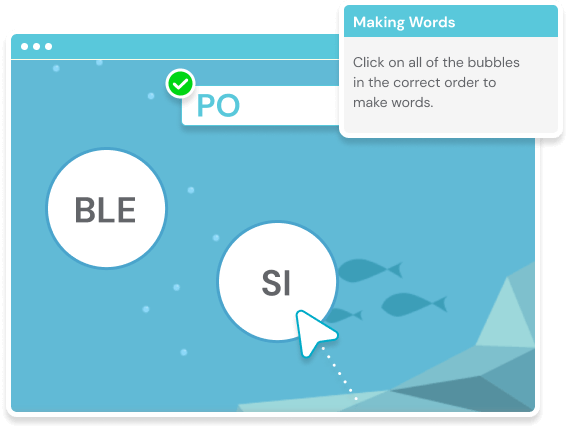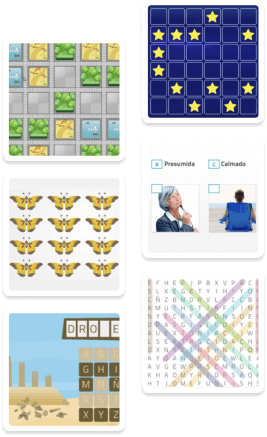
Use Cases
Mental Illness
It works on cognitive impairment linked to mental health disorders with activities that work on reasoning, behavior, the ability to recognize reality, emotions, mood, thinking or relationships with others.
In which profiles can we apply it?
Some activities for
people with mental illness

Organize
the Bookcase
In this game the patient must place the objects on the shelf according to a model placed on a mirror. In this way, sustained and selective attention, hemineglect, spatial relationship and processing speed are trained.
- Organized in twelve levels of difficulty.
- The patient advances or moves back in levels depending on his successes and errors.
Making Words
The patient works on working memory, hemineglect and vocabulary by using the different letters or syllables to form words.
- Game organized in stages.
- The patient moves up or down a level depending on his successes and mistakes.


Organizing
a Timetable
In this worksheet the patient must organize different tasks in an agenda according to the time available, thus working on his or her time estimation and planning skills.
- Four levels of difficulty.
- Available in digital or paper format.

Access thousands of exercises on our platform
Support your intervention with data
Daily tracking of each patient
Access evolution graphs that are updated at the end of each exercise and evaluate the evolution of your patients for a specific activity or at a global level, from the beginning of their treatment to date.

On what basis
do we develop our exercises?
We identify the constructs, operations and functions (Burgess et al., 2006) involved in human activity, in order to create exercises capable of being calibrated during the rehabilitation process.
Burgess, P. W., Alderman, N., Forbes, C., Costello, A., M-A.coates, L., Dawson, D. R., … Channon, S. (2006). The case for the development and use of measures of executive function in experimental and clinical neuropsychology.Journal of the International Neuropsychological Society, 12(02), 194- 209.
The aim is to create motivational and customizable ecological contents that support the neuropsychological stimulation and rehabilitation processes (Wilson, 1987; 1989).
Wilson, B. (1987). Single-Case Experimental Designs in Neuropsychological Rehabilitation. Journal of Clinical and Experimental Neuropsychology, 9(5), 527-544. doi:10.1080/01688638708410767
Related studies
Mental Illness
Schizophrenia
Sablier, J., Stip, E., Franck, N., Giroux, S., Pigot, H., & Nadeau-Marcotte, F. (2011). Mobus project-assistive technology for improving cognition and autonomy of patients with schizophrenia. International Clinical Psychopharmacology, 26, e65-e66. doi:10.1097/01.yic.0000405743.97198.55
Social Phobia
Neubauer, K., von Auer, M., Murray, E., Petermann, F., Helbig-Lang, S., & Gerlach, A. L. (2013). Internet-delivered attention modification training as a treatment for social phobia: a randomized controlled trial. Behaviour research and therapy, 51(2), 87-97. doi:10.1016/j.brat.2012.10.006
What our clients say about us

Paula Rodríguez,
neuropsychologist
I have been using NeuronUP for more than two years at the brain injury association and the patients are very happy to work with the platform’s activities.”

Gloria Cano,
neuropsychologist
I think it is a platform that every psychologist and neuropsychologist should have, as it provides you with the necessary material to work on cognitive stimulation in a comfortable and easy way, in person and from home”.

Rocío Mendoza,
neuropsychologist
With NeuronUP, the monitoring of children’s progress is more objective and demonstrable to parents.”
Learn more about
NeuronUP
Try it for free
The platform that 3,500+ professionals use on a daily basis